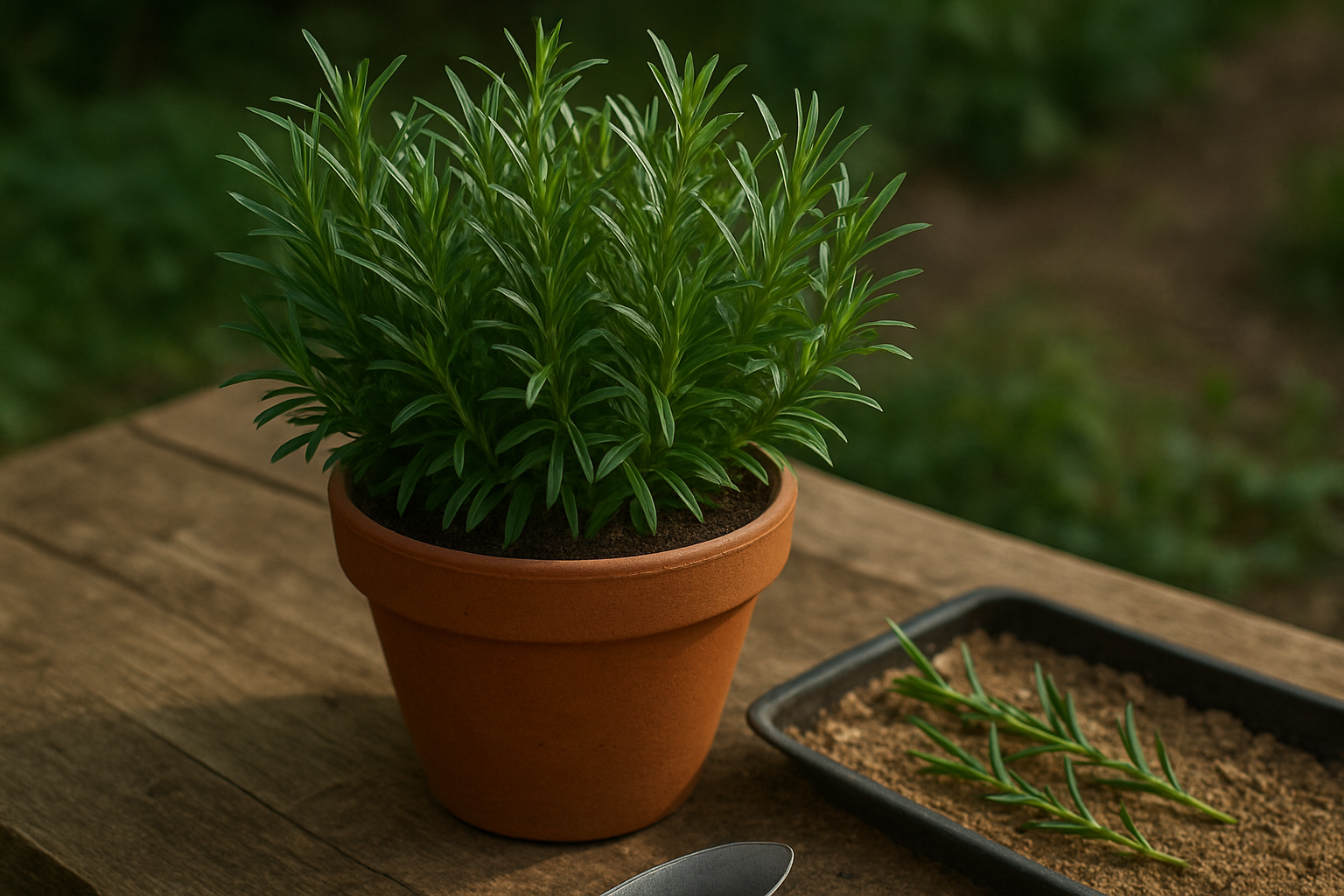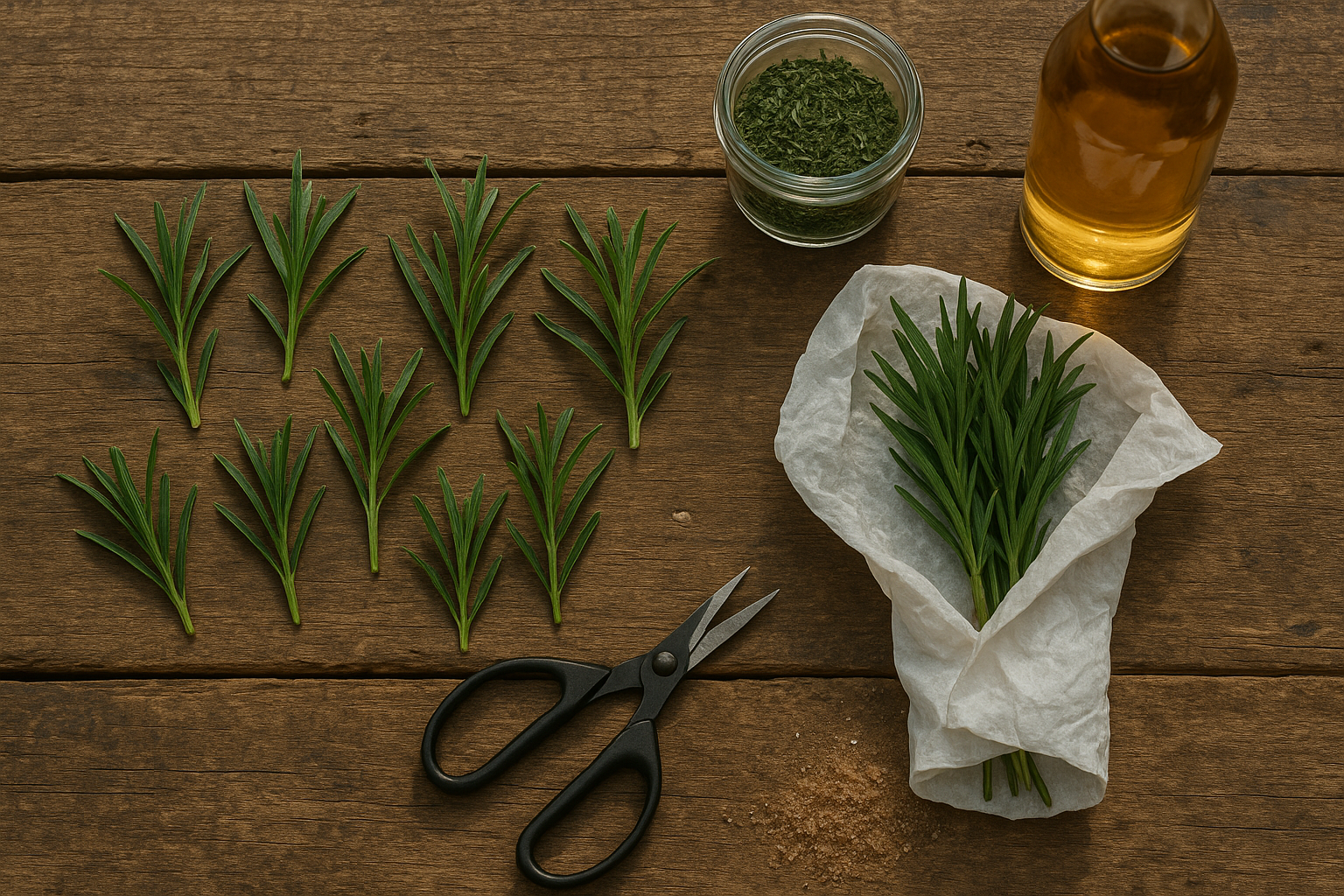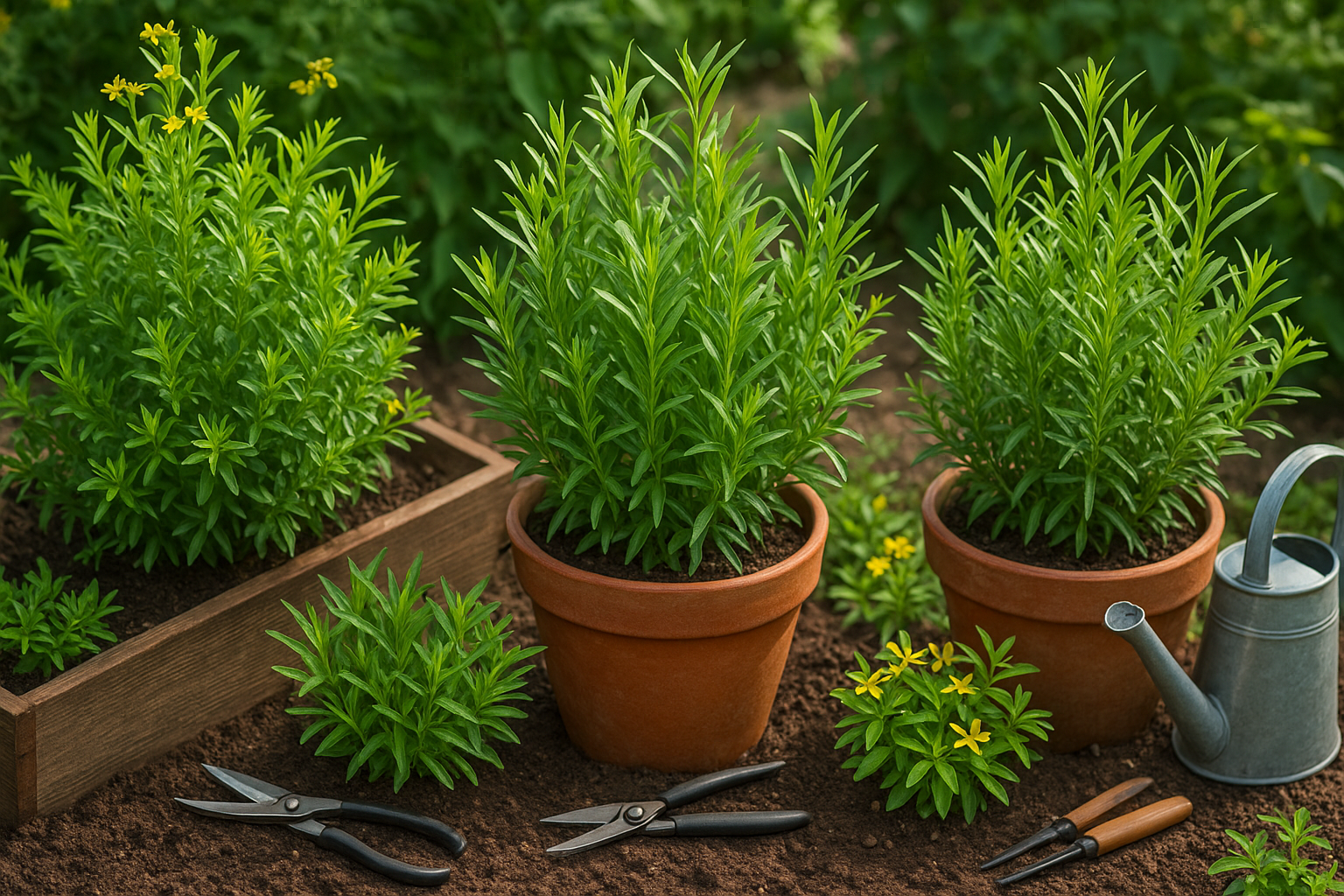Introduction to Tarragon
When it comes to elevating your culinary creations, knowing the best tarragon varieties can make all the difference. Tarragon has quickly earned its place as a beloved aromatic herb, treasured by chefs and home cooks alike for its unique punch of flavor. With hints of licorice and a touch of sweet anise, tarragon adds a sophisticated note to dishes ranging from classic French béarnaise sauce to simple roasted chicken, bringing depth and brightness wherever it’s used.
Its fragrant leaves are just as at home in a vinegar infusion or a salad as they are steeped in a summer sauce. But to get the most from this versatile herb, choosing the right tarragon variety for your garden is key. Some types offer bolder flavors, better weather resistance, or are simply easier to grow at home—even in pots on a sunny windowsill.
Selecting wisely ensures you’ll enjoy healthy, flavorful harvests tailored to your cooking style and regional climate. Whether you’re a culinary explorer or a gardening enthusiast, understanding the nuances between tarragon varieties helps you get the very best from this special herb—right from your own backyard.
French Tarragon

French tarragon (Artemisia dracunculus ‘Sativa’) is a must-have herb for any serious home cook or gardener, prized for its delicate, anise-like flavor that adds a subtle, sophisticated touch to dishes. Unlike Russian tarragon, which can be bitter and harsh, French tarragon offers aromatic, almost sweet notes—perfect for classic French recipes like Béarnaise sauce, chicken tarragon, and vinaigrettes.
However, this herb can be a bit fussy in the garden. French tarragon thrives in well-drained, moderately fertile soil and full sun but dislikes soggy conditions and heavy clay. It’s sensitive to cold, so in cooler climates, growing it in containers is a smart move—you can move the pots indoors during winter or add mulch for extra protection.
Unlike many herbs, French tarragon rarely flowers and almost never produces viable seeds. The best way to propagate it is through stem cuttings or plant division. Take 4- to 6-inch cuttings in spring or early summer, strip the lower leaves, and root them in moist, sandy soil for the best results. Water just enough to keep the soil slightly damp, as tarragon hates “wet feet.”
Plants typically reach about 24 inches tall, forming a bushy clump with slender, aromatic leaves. Harvest with scissors, snipping stems in the morning just as new growth appears—you’ll get the most intense flavor this way. But be gentle; overharvesting can weaken the plant.
Watch out for root rot in wet soils, and remember that tarragon can struggle in humid or cold weather, making good air circulation and soil drainage crucial. With a little care, French tarragon rewards you with gourmet flavor and elegant, easy-to-use leaves year after year.
Russian Tarragon
If you love the idea of growing tarragon but live in a cooler or less predictable climate, Russian tarragon might be your new garden hero. While French tarragon is prized by chefs for its robust, anise-like flavor, it can be notoriously fussy—preferring warmer temperatures, loose soil, and a delicate touch.
Russian tarragon, by contrast, offers a milder, grassier flavor that lacks some of the complex sweetness of its French cousin but makes up for it with impressive hardiness. Russian tarragon plants are typically taller and bushier, reaching up to three feet, and they can withstand a much broader range of temperatures and soil types. This makes them ideal for gardeners in northern or mountainous regions where French tarragon often struggles.
Maintenance is also easier: Russian tarragon grows easily from seed, establishes quickly, and doesn’t require the same vigilance against rot or frost. While it may not be the first pick for classic Béarnaise sauce, its lighter taste works well in salads, vinegars, and roasted vegetable dishes. You can also use it fresh where French tarragon might be overpowering.
Non-culinary uses include adding chopped leaves to herbal teas or using the dried plant in sachets for a subtle, earthy fragrance. Ultimately, if you want a resilient, versatile herb with minimal fuss—especially outside classic Mediterranean climates—Russian tarragon is a smart, reliable choice.
Mexican Tarragon
If you’re looking for a flavorful herb that thrives in warm, sunny environments, Mexican tarragon (also called Mexican mint marigold) is a standout choice for both gardeners and cooks. Unlike French tarragon, which struggles in hot, humid regions, Mexican tarragon loves the heat and offers a similar sweet, licorice-like flavor—though with a subtle anise note and less bitterness than its French cousin.
This makes it a fantastic culinary substitute, especially where French tarragon is difficult to grow. Beyond the kitchen, this herb brightens gardens with cheerful yellow blossoms that attract pollinators and add a splash of ornamental color from late summer into fall. It’s also naturally resistant to many pests and diseases that can plague more delicate herbs, making it a low-fuss option for beginner gardeners.
For best results, plant Mexican tarragon in well-draining soil with plenty of sunlight, watering only when the top inch of soil is dry. It handles drought well and even grows happily in pots. Snip leaves to flavor vinegar, dressings, chicken dishes, or herbal teas—its robust flavor stands up beautifully to heat and is often favored in Southwestern and Mexican cuisine.
Try sprinkling it into scrambled eggs or infusing it in honey for a twist on classic recipes; its versatility might just make it your new kitchen favorite.
Choosing the Right Tarragon for Your Garden
Selecting the right tarragon for your garden starts with knowing there are two main types: French and Russian. French tarragon is prized for its sweet, anise-like flavor and is best for culinary use, but it’s a bit fussy—it prefers cooler climates, well-drained soil, and plenty of sun without scorching heat. Russian tarragon is hardier, able to survive harsh winters and poor soil, but its flavor is milder and often considered inferior for cooking.
If you have a small space or unpredictable weather, try growing tarragon in pots or raised beds where you can control moisture and drainage. Pots also make it easy to move the plant indoors if frost threatens. Make sure your container has good drainage holes, and use a light, sandy potting mix.
For garden beds, choose a sunny spot and don’t crowd your tarragon—good airflow helps prevent disease. Tarragon pairs well with companion plants like tomatoes and peppers, which benefit from its ability to deter some pests.
Regularly trim the plant to keep it bushy and flavorful. Water when the soil is dry but avoid soggy conditions. Watch out for aphids and powdery mildew, the most common pests and diseases affecting tarragon. Blast aphids off with water or use insecticidal soap, and keep leaves dry by watering at the base to limit mildew.
Whether you’re flavoring dishes or just enjoying a splash of green, smart variety selection and simple care will make your tarragon a garden staple.
Harvesting, Storing, and Enjoying Homegrown Tarragon

For the best-tasting tarragon, harvest leaves in the morning just after the dew dries but before the sun gets too hot—this helps lock in the freshest, most potent flavors. Use clean, sharp scissors to snip stems just above a leaf node, which encourages bushier growth and a longer picking season.
To store fresh tarragon, wrap the stems loosely in a damp paper towel, slip them into a plastic bag, and keep them in the fridge where they’ll stay fragrant for up to a week. For longer storage, hang small bundles upside down in a cool, dry spot out of direct sunlight until completely dry. Then strip off the leaves and keep them in an airtight jar for several months.
Tarragon’s subtle anise flavor is delicious in homemade salad dressings, whisked into mayo for chicken salad, or stirred into creamy scrambled eggs. You can also steep a few sprigs in vinegar to create an aromatic base for sauces or drizzle it over roasted vegetables.
Try tarragon in classic French béarnaise or sprinkle chopped leaves over grilled fish to add a fresh, gourmet touch. Experiment with blending tarragon into butter to melt over steak or stir into homemade soups—once you’ve grown and preserved your own, you’ll find tarragon’s flavor perks up all kinds of simple everyday meals.
Conclusion & Frequently Asked Questions
Tarragon comes in several varieties—French, Russian, and Mexican—each with its own unique flavor and growing requirements. French tarragon is prized for its sweet, subtle taste and is best grown from cuttings in well-drained soil with plenty of sun. Russian tarragon is hardier and easier to grow from seed, though its flavor is milder, making it a great choice for beginner gardeners or cooler climates. Mexican tarragon offers a bolder, anise-like punch and handles heat and humidity better than the others.
A common question is whether tarragon requires much care—fortunately, it’s fairly low-maintenance: just keep the soil moist but not soggy and trim regularly to encourage bushy growth. Another FAQ is, “Can I grow tarragon indoors?” Absolutely! Just make sure it gets plenty of sunlight or use a grow light.
Don’t hesitate to try different varieties in your garden, and be sure to share your tips and successes with fellow gardening enthusiasts.
